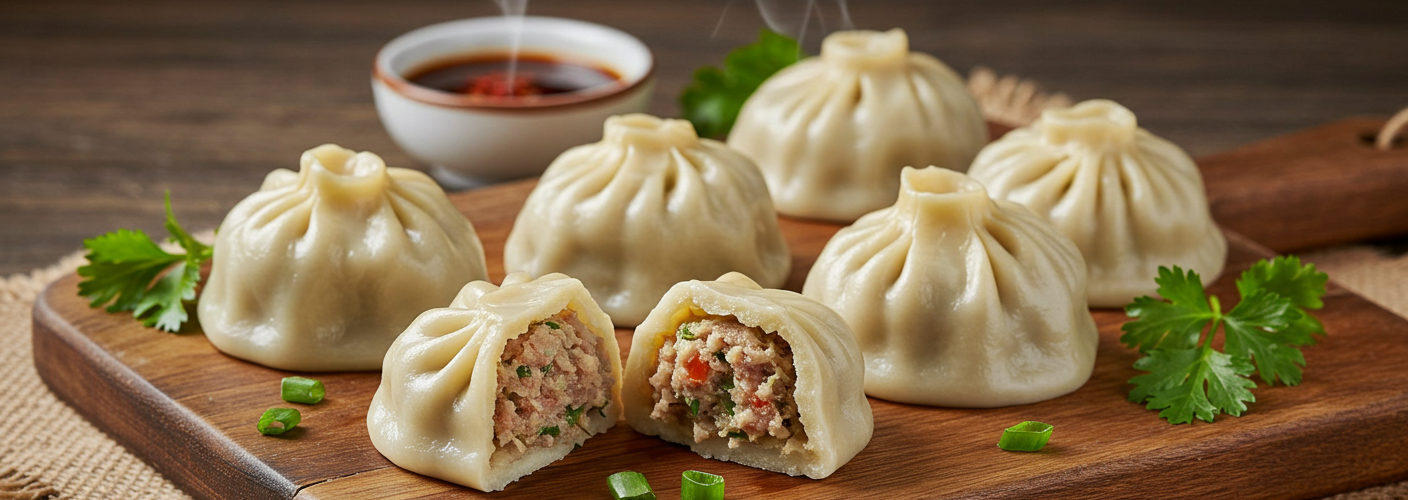If you’re on the hunt for a culinary experience that marries comfort with tradition, look no further than buuz, the delectable steamed dumplings hailing from Mongolia. Buuz is a staple of Mongolian cuisine, lovingly crafted with simple ingredients yet bursting with flavor. These delightful dumplings have gained popularity not just within Mongolia but also around the world, captivating food enthusiasts with their unique taste and cultural significance.
Origins and Cultural Significance
The roots of buuz can be traced back to Mongolia’s nomadic culture, where meals are often designed to be hearty, portable, and easy to prepare in the vast outdoors. Traditionally, buuz is made with ground meat—most commonly mutton or beef—mixed with a few aromatic ingredients, encased in a thin wheat-based dough. The preparation of buuz is often part of significant celebrations, such as the Lunar New Year, known as Tsagaan Sar, where families gather to make and enjoy these dumplings together.
The cultural importance of buuz transcends mere sustenance; it reflects the communal spirit of Mongolia. Preparing these dumplings is often a family affair, where everyone participates in the mixing, filling, and folding processes. It’s not uncommon to find mothers teaching their children the art of making buuz, passing down generations of culinary knowledge.
Crafting the Perfect Buuz
Creating buuz starts with the dough. To make the dough, combine flour, water, and a pinch of salt, kneading until it becomes soft and pliable. After letting it rest, the dough is rolled out and cut into small circles. The filling, which is the heart of the buuz, is typically made from minced meat mixed with onions, garlic, and a splash of water to keep it juicy.
Seasoning is crucial; the simple salt and pepper blend enhances the natural flavors of the meat, showcasing the essence of the dish. For a variation, you can include additional spices like cumin or herbs, depending on your taste preferences. Once the filling is ready, place a spoonful in the center of each dough circle, fold the edges up, and pinch them together, creating a beautiful dumpling that is ready for steaming.
The cooking process involves placing buuz in a steamer basket lined with cabbage leaves or parchment paper to prevent sticking, then steaming them for about 20 minutes. The result is a fluffy, tender dumpling that is sure to impress.
Enjoying Buuz
Buuz can be served as a standalone dish or alongside traditional condiments like soy sauce or vinegar for dipping. The best way to enjoy these dumplings is to savor them while they’re hot, allowing the flavor to envelop your palate fully.
For those who enjoy a bit of spice, adding a dash of chili oil can elevate the experience further. Buuz is not just food; it’s a cultural journey on a plate, perfect for gatherings with friends or family, bringing warmth and joy to any occasion.
Conclusion
In every bite of buuz, you experience a piece of Mongolian heritage. These steamed dumplings, with their rich flavors and moist fillings, are more than just a meal—they embody a shared history and the essence of community. Whether you’re experiencing them for the first time or revisiting a beloved dish, buuz is a must-try for anyone seeking to expand their culinary horizons. So why not gather a few friends, roll up your sleeves, and try making buuz together? The experience will be just as delightful as the dumplings themselves!




Add comment